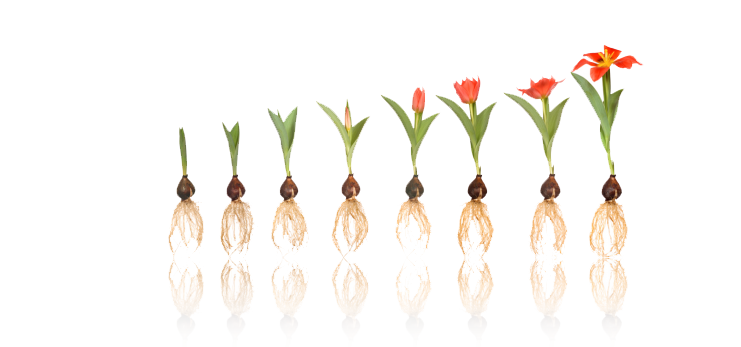KVK At A Glance
A review on impact of KVK Chhatarpur
Krishi Vigyan Kendra Chhatarpur was established in the year 2006 and team of KVK Started work during the year 2007-8. This KVK comes under Bundelkhand zone which is characterized by low rainfed agriculture, undulated topography with low soil depth. Total geographical area of the district is 8.63 lakh ha., total cropped area is 4.85 lakh ha. (1.70 in Kharif & 3.15 in Rabi), net irrigated area is 3.06 lakh ha. Area under forest is 1.83 lakh ha. There are 83,512 small and 93,294 marginal farmers.
Major Farming System are:-
- Blackgram-Wheat/Garm/Mustard
- Sesame-Wheat/Gram/Mustard
- Soybean-Wheat/Lentil/linseed
- Blackgram/soybean/sesame in Kharif and gram heat in Rabi is hair crops.
Brinjal (1273 ha.), Tomato (928 ha), Potato (915 ha), are the main vegetable crops. Chilli (728 ha), Ginger(614 ha), & Coriander (1399 ha), are the important spices crop. Under medicinal production of 50,000-60,000 L/day. Some of the major impact noticed during last three years were in sesame, soybean, mustard and gram are being presented here.
Saseme: Phytophthora blight resistant variety TKG-55 and JTS-8 were demonstrated. The increase in productivity was observed as high as 27%. Horizontal spread of the technology is in 1400 ha.
Soybean: Farmers are using soybean variety JS-335 but due to long dry spell during stages there is loss in yield upto 30-35%. To escape from the loss short duration variety JS-9305 were demonstrated. With in three year this variety captured 1/5th portion of total seed sown by the farmers and its horizontal spread waGs noticed in 3,255 ha.
Mustard: Out of 3.60 lakh ha land light soil covers 2.43 lakh ha land where the oilseed crops could thrives well. Variety JM-1 was demonstrated. Horizontal spread of the technology is observed in 1,800 ha with the increase in productivity by 60%.
Gram: Gram is one of the major pulse crops of the Rabi covering 89,200 ha in the district. Wilt is the major problem observed in the crop. With this resistant variety JG-130 and JG-11 were demonstrated. There was 27% increase in productivity of the crop.
Betel vine : It is most important cash crop grown in the district chhatarpur. The area was decreasing due to sclerotial wilt. Impact of demonstration on integrated disease management (IDM) was noticeable. Area which goes down to 138 ha from 334 ha in the initial year has again gone up to 262 ha during 2009-10.
Vegetables: Although total area is only 5,691 ha still a good source of the income. With this view demonstration on IDM in ginger and improved varieties were which showed change in income from Rs. 64,000 ha to 1,53600 per ha. IDM in chilli bring the change in the income of farmers from 76,650 to 97,800. Likewise introduction of garden pea (Azad P-1) over field pea also gave the bumper increase in farm income.
Training Programmers’: So far 265 courses benefited to 6000 participated included rural youth farm women & extension personnel. Vocational training for rural youth enables them to earn extra income of 2,500- 2,700 per annum. During the year 2008-09 training on integrated pond management were imparted. They applied only one technical intervention and noticed change in net income by 7000 Rs./ha. From fish production.
Extension activities: To create awareness among the farmers large no. of extension activities. Were organized. During the 2009-10 15,000 animal camps. Quarterly magazine of KVK is being circulated to all villages panchayat of district chhatarpur.
Other important activities: Availability of good quality planting material is big constraint. So far KVK has produced 129.24 q seed and 54500 seeding of fruit and vegetable. Technology park is being developed for dissemination of technology. At present it includes crop cafeteria, Medow orchard of buava (Allahabad, safeda), High density orchard of mango (Amrapali), medicinal & Nutritional garden, vermicomposting etc.
Impact of Improved Agricultural Technologies on Kharif area expansion in District Chhatarpur
During the year 2007 in district Chhatarpur the area under Kharif was only 163.2 (000ha.) and average Kharif productivity was 3.65qt/ha. The farmers undertaken Soybean, sesame and blackgram. They often used long duration varieties, High infestation of weeds and high susceptible variety of soybean causing 30-35% yield loss under rain fed condition.
- Intervention of KVK: KVK introduced the short duration improved varieties under seed village programme to escape the drought/long dry spell during pod filling stage and sensitized about integrated management of weed, pest and diseases.
Result:-
- Cultivated area in kharif has increased from 163.2 m ha (2007) to 255 m ha (2012).
- Average productivity of kharif crops has increased from 3.65 q/ha (2007) to 9.78 q/ha(2012).
- Low producing, long duration and disease susceptible varieties is being replaced by high producing, short duration and disease resistant varieties.
- Weed and pest problem has been managed by Integrated Weed Management and Pest Management practices
Natural Resource Management
Intervention of KVK:
- Integrated Pest Management (Use of T, pheromone trap)
- Integrated soil health management (Use of Zinc and sulphur)
- Vegetable gardening
- New varieties of major crops like Wheat var. HI 1418, GW-273 & GW-366, Soybean var. JS-9305, JS-335 & JS-9560 and Mustard var. Pusa Tarak.
- Stop dam and well construction for irrigation.
- Cattle vaccination camps
Result:-
- Yield of Soybean increased by 3-4 q/ha (baseline yield 8-10 q/ha), Wheat by 4-6 q/ha (baseline yield 25 q/ha) and Mustard by 3 q/ha (baseline yield 8-10 q/ha).
- 7 stop dam and 15 dug well constructed to cover 209.64 ha area under irrigation benefitting 150 farmers.
- Average increase in income of Rs.1800-2000 for benefitted families from the baseline.
- Average Rs 2000-8000 increase in income through land and Water activities for benefited families.
Land utilization (Area in ha)
Total Area: 20 ha and total Cultivated area 21.50
Season wise land use |
Cultivated area (ha) |
Cropping intensity % 108 |
|||
Irrigated |
Partially irrigated |
Rain-fed |
Total |
||
Kharif-2012 |
13.5 ha |
- |
- |
13.5 |
|
Rabi-2012 |
8 ha |
- |
- |
08 |
|
Summer-2013 |
|
- |
- |
- |
|
Total |
- |
- |
- |
|
|
Total cropped area |
21.50 |
|
|||
Productivity (kg/ha) of various crops for the year Kharif-2012 and Rabi 2012-13( Actual), and Summer- 2012-13 (Expected)
S. No. |
Crop/Variety |
Grade of Seed |
Area (ha) |
Total Production (q) (A.P) |
Productivity (kg/ha) |
Balance Last year if any |
Kharif-1 |
||||||
1 |
Blackgram (JU-3) |
B/S |
12.5 |
40.58q |
325 |
Nil |
2 |
Sesame (TKG-306) |
B/S |
1.0 |
4.15q |
415 |
|
Rabi |
||||||
1 |
Gram (JG-16) |
B/S |
5.0 |
12.5 |
250 |
|
2 |
Gram (JG-74) |
B/S |
3.0 |
7.5 |
250 |
|
Availability of graded seed for sale during Kharif season -2013.
S. No. |
Crops |
Variety |
Grade of Seed |
Graded quantity (q) |
|
Produce of |
Balance of last year if any |
||||
1 |
Blackgram |
JU-3 |
B/S |
40.58 (Ungraded) |
|
2 |
Sesame |
TKG-306 |
B/S |
3.95 (Ungraded) |
|
Proposed Production programme: For Kharif, Rabi & Summer 2013-14 including field & Horticultural Crops
S. |
Crop |
Variety |
Grade of seed |
Area (ha) |
Projected production (q) |
Value (Rs.) |
Source of (N/B) seed |
Kharif-2013 |
|||||||
1 |
Sesame |
TKG-306 |
B/S |
15 |
75 |
9,00,000 |
JNKVV |
Rabi-2013 |
|||||||
1 |
Mustard |
Pusa Jagannath / JM-2 |
B/S |
10 |
90 |
6,30,000 |
JNKVV |
2 |
Gram |
JG - 11 |
B/S |
5 |
50 |
4,00,000 |
JNKVV |
Year of Establishment: 15 May 2006 
(Indian Council of Agricultural Research) Jawaharlal Nehru Krishi Vishwa Vidyalaya, Jabalpur
KVK since inception
Krishi Vigyan Kendra (KVK) is a noble concept developed by Indian Council of Agricultural Research (ICAR) which was rest upon a solid base of transfer of technology from laboratory to farmer's field with respect to Agriculture, Horticulture, Animal Husbandry, Floriculture, Bee keeping, Mushroom Cultivation, Broiler Farming and allied subjects.
Krishi Vigyan Kendra Chhatarpur was granted by the Indian Council of Agricultural Research, New Delhi to JNKVV, Jabalpur in the year 2005 situated at 23 km on national highway NH-75 (Janshi-Chhatarpur). This KVK comes under Bundelkhand region which is characterized with low rainfed agriculture, undulated topology with low soil depth. After every 3-4 year drought or low rainfall condition are developed and increase the severity of problems like Mono cropping, low productivity of crops etc.
Mandate of KVK
Over time, change in mandate of KVK has taken place. According to 10th Plan, the mandate of the KVK is technology assessment, refinement and demonstration of technology/products and its dissemination through training of farmers and extension personnel. In 11th Plan, in addition to mandated activities like technology assessment, refinement, demonstration and training, the KVK have been the given added responsibility to work as knowledge and resource centre of agricultural technology for supporting initiatives of public, private and voluntary sector for improving the agricultural economy of the district.
Activities of KVK
The major emphasis of KVK is to enhance the production and productivity as well as to generate household income and employment of farming community. The activities of KVK include -
- On-farm testing to identify the location specificity of agricultural technologies under various farming systems,
- Front line demonstrations to establish its production potentials on farmer’s fields,
- Training of farmers and farm women to update their knowledge and skills in modern agricultural technologies, and training of extension personnel to orient them in the frontier areas of technology development.
- Work as knowledge and resource centre of agricultural technology for supporting initiatives of public, private and voluntary sector for improving the agricultural economy of the district,
- Create awareness about frontier technologies through large number of extension activities like farmer fair, field day, strategic campaign, Ex-trainees meet etc.
- The seed and planting materials produce by the KVKs also made available to the farmers.
Thrust Areas
To facilitate the availability of seed of improved varieties of major crops (Soybean/Gram/Wheat/Black gram/Mustard) |
Better input use management-IPNM, IPM, IDM |
To motivate farmers towards the cultivation of Vegetables/ Spices/ Medicinal crops |
Balance feeding of milch animal and health management |
Need to organize Agri-based Vocational trainings for Self-employment of Rural Youth |
Conservation of natural recourses and use of Organic and Bio-fertilizer |
To create awareness regarding post harvest losses during storage and value additions to Agro-products |
Women empowerment through training and farm mechanization |
KVK at a glance Keeping the thrust areas in view, KVK conducted total 53 trials. A total number of 63 technologies/ products were demonstrated for 822 beneficiaries and 481 training were organized for 8587 participants during the year 2007-08 to 2012-13.



